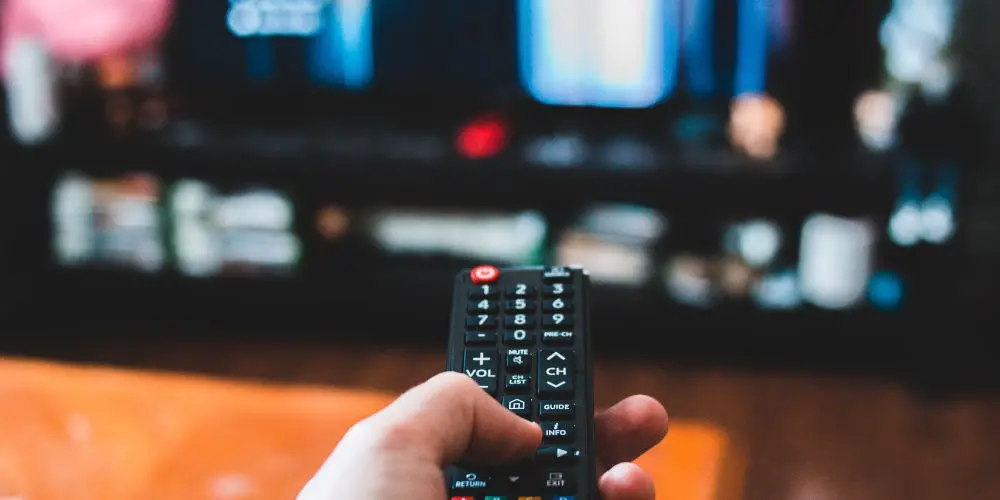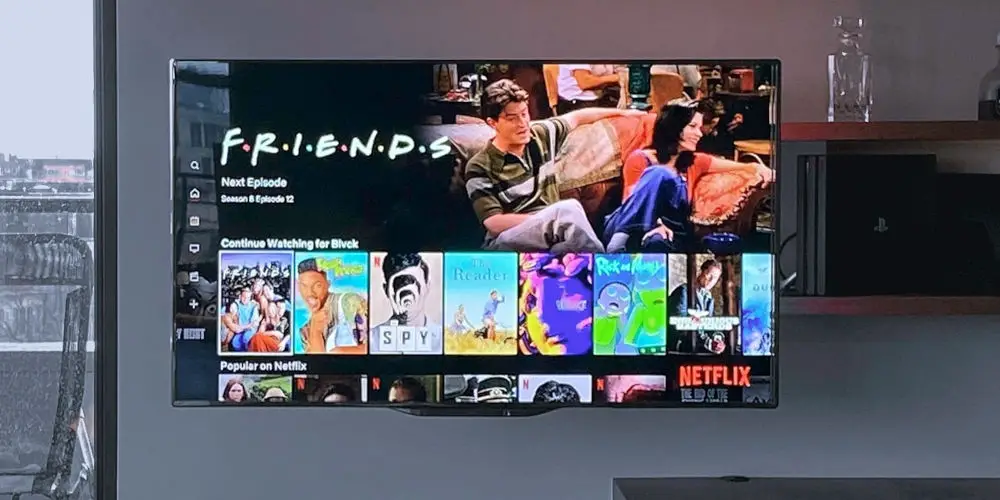Do smart TVs use more electricity than traditional ones?

More people than ever are purchasing smart TVs, and for good reason. They offer so much more than standard televisions. And yet some worry about the running costs. They might wonder do smart TVs use more electricity than traditional ones?
These questions are valid, especially as smart TVs offer access to terrestrial TV stations, apps, the internet, and in some cases, voice control. The good news is that smart TVs don’t use more energy compared to conventional Televisions.
However, smart TVs usually need slightly more power to process data ensuring the best user experience and video quality. As a rule of thumb, the more advanced your TV’s settings and options are, the more power it consumes.
Let’s discuss: Do smart TVs use more electricity than traditional ones? So, you can upgrade with peace in mind that the running costs won’t balloon.
Why buy a smart TV in the first place?
You might wonder what the fuss is about with smart TVs. In short, they are like moving from a bike to a car or a NOKIA 3310 to a Google Pixel 7. Of course, both allow you to watch standard television channels, but the smart TV offer so much more.
Smart TVs work a little differently from the standard units we all know and love. Firstly, they connect to the internet, either by using built-in Wi-Fi or a wired Ethernet connection.
By being connected to the internet, the TV can access a range of apps, which in turn offer you the opportunity to enjoy a multitude of services. Depending on the operating system used by your smart TV, you’ll have access to different apps and services.
Most offer access to an Internet browser, YouTube, Netflix and Amazon Prime (30-day FREE trial). Some will have the option to install Disney+, Facebook, games and more. Most should allow you to stream content directly from your phone using a built-in Chromecast and/or Miracast.
They can even work with Alexa or Google Assistant. Some will allow you to integrate and control smart home products, including blinds, lights, door locks, and more. A noticeable example is Samsung, which owns SmartThings, a home automation brand.
So, you’ll want to research a few different models to decide what is best for your family and requirements.
How does a smart TV compare to a conventional one?
Sadly, there’s no standardised definition for what a smart TV is or should be. And just to confuse issues, you can buy devices that turns any TV smart, such as Apple TV, Google Chromecast, or Amazon Fire TV Stick. And these devices achieve a similar outcome to investing in a smart TV.
As with conventional televisions, smart TVs come in a range of shapes and sizes. Smart TVs are available with LCD, OLED and other screens, allowing you to select the best viewing experience.
Some smart TV will have built-in set-top boxes, such as Freeview or Freesat, and still have a few HDMI inputs for you to connect devices to it. Having these features built-in means you don’t need a large rack of equipment like you would need with a conventional TV.
After upgrading to a smart TV, most find they use their Blu-ray or DVD player and set-top box less as they can stream movies through the built-in apps. So these devices are no longer needed and usually end up on eBay or in the attic.
The difference between a smart TV and a traditional one lies behind the screen. A smart TV combines a computer, a television, and multiple set-top boxes. And with plenty of options available, it’s best to do your research and buy the one that provides the functions you need.

How much electricity does the average television use?
The answer is it depends. The amount of electricity a television uses varies depending on several factors, which include:
- Age: Older TV models tend to have a higher wattage than newer models.
- Size: The smaller your television, the lower its wattage.
- Type of Screen: LCD and LED televisions have similar energy needs, but CRT and plasma TVs use nearly three times the energy.
Sadly, manufacturers have no obligation to reveal how much energy a particular TV model uses and what the typical cost might be. Consumer champion, Which? have done a lot of research into the topic, which you can read in their article on How much does your TV really cost to run?
To estimate what it cost to run your television, you’ll need to find the wattage of your TV. Usually, this is on the back panel or in the manual. You’ll see a number with a “W” following it, this is the wattage.
Next, multiply that number by the number of hours your TV is on per day and then divide it by 1000 to determine your kilowatt-hour rate. You then want to look up your power company’s cost per kilowatt-hour and multiple these two figures together.
You now have a figure for what it costs for you to run your TV per hour.
Do smart TVs use more electricity than traditional models?
If you compare a smart TV with a traditional unit, you’ll see that Smart TVs don’t use more energy than conventional TVs. In most cases, they use less.
But that’s only part of the story. If your current TV system includes a set-top box, game console, and Blu-ray player, you need to add these into your calculation. You might find that upgrading to a smart TV means you don’t need them, saving you cash on your energy bills.
Bear in mind that a smart TV does use an internet connection. So it will use a tiny amount of energy connecting to your router and transferring data to and from it. In general, smart TVs do not use more energy by being smart.
The reality is that how much energy your television uses depends on the TV’s size, it’s age, and screen type. And not whether it is a smart TV or a conventional TV.

Any tips to use less energy when watching TV?
With energy costs continuing to balloon, every little tip or trick helps to save money. Here are a few ways that you can cut down on your TV energy consumption:
- When you buy a new TV, make sure that you check its energy efficiency
- Lower your TV brightness in the settings to lower your TV’s energy use
- Disable the “always-on” features on your TV so that it will not use electricity when turned off
- Turn off your TV at the wall when you are not watching it.
Most of the TVs that you can buy today are energy-efficient. However, there are still ways you can reduce your electric bill.
Is buying a Smart TV, your best option?
Upgrading an older television to a new smart TV is a worthwhile investment. You could buy the latest TV that isn’t smart and pair it with a streaming dongle.
Regardless of the option, the difference in running costs between a smart TV and a convenient option is minimal. Plus, you might find the energy usage is lower on the smart TV.
If you’re currently using an older television, it might be using more than twice the energy to watch programs. So, upgrading to a new TV will reduce your energy consumption massively.
As you can stream content directly from your smart TV, you might cancel your Sky or Virgin media package. Remember, many streaming services require a subscription or purchases to view the content.
Remember that different factors go into your television’s energy consumption. It’s not only the size, age, and display that matter, but also how many hours you leave your television on and the backlighting setting have an impact as well.
By making some slight adjustments in your daily habits, you can easily reduce your energy use.

Should you choose a smart TV or not?
Coming back to our question: Do smart TVs use more electricity than traditional ones? The answer is quite simple.
Regardless of what kind of television you have, a bigger screen will use more energy. If you’re determined to have a giant TV, just know it will use more energy than a 32-inch screen.
However, you can dim the brightness and save money. Plus, you can always turn the TV off at the wall when not in use. Theses are just two tips to save cash after buying a new TV.
The type of screen is another major factor. The new OLED displays are the most energy-efficient, and LED displays are second. Whereas an older plasma or CRT display, your TV will consume more energy.
Even if buying smart TV slightly lowers your energy usage, you might still need to buy subscriptions to streaming services.
It seems the future features only smart TVs with fewer non-smart televisions made each year. So, you may not have a choice in the future. However, you can use smart TV just as you would a conventional one, and it won’t use extra energy or cost more.
Next, you might like to read our article that demystifies common TV acronyms, including HFR, QLED, and HDMI.




